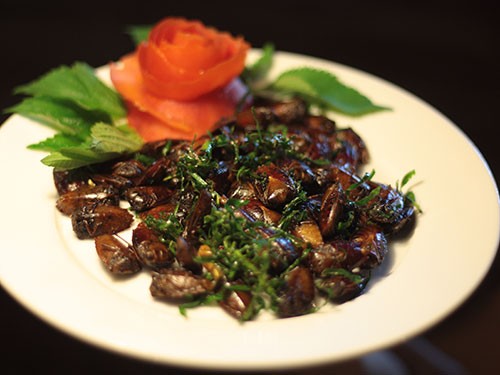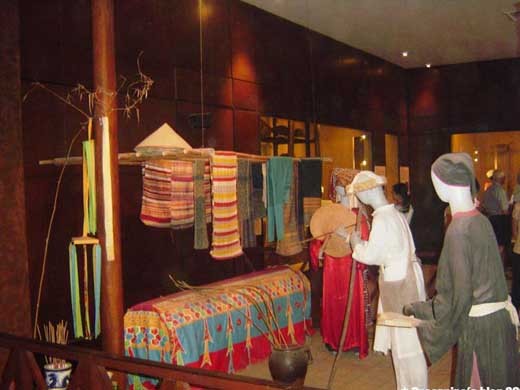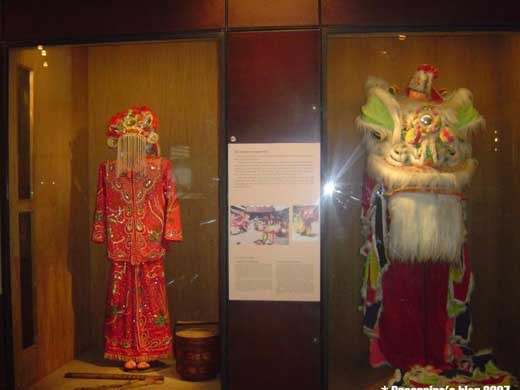Hello and welcome to VOV’s Letter Box, our weekly feature dedicated to listeners throughout the world. We are Mai Phuong and Ngoc Huyen.
A: First on our show today, we’d like to welcome Vladimir Nikitin of St. Petersburg, Russia, to our program. In his first reception report to VOV, the 33-year-old electronic engineer wrote that shortwave radio listening is his main interest and sent us a picture of him standing in front of an array of audio equipment.
B: Mr. Nikitin reported listening to our program on March 2014 from 15:50 to 16:00 UTC on the frequency of 7285 Khz with signal strength rated at 43333. Thank you Nikitin for listening. We hoped you will continue to tune in to our program for more update news and interesting stories about Vietnam, its land and people. We will send you a QSL card to confirm your listening.
A: Alan Fenix of the US regularly listens to our program. He listened to us on March 14th, 18th and 23rd and reported on several news stories. Thank you, Alan, for tuning in to our program and sending reception reports very frequently. We’ll confirm your reception reports with a verification card soon.
B: SB Sharma of India said our Saturday report is always his favorite feature because it is so informative. He caught a story about insect eating in Hanoi in our broadcast on Saturday, March 22nd. He wrote: “This Saturday report was very special. VOV described the insect eating in Hanoi. When I listened to the radio, it was informative but when I saw the picture of delicious insect dishes served on plate, it was very strange….”
A: Sharma quoted one diner featured in the story, who overcame her initial fear, tried the insects and realized that they are delicious and tasty, especially if they are accompanied with beer or alcohol.

Stink bug dish |
B: Personally, I still don’t dare to try insects, but I know that insect eating has crept onto the menu of many restaurants around the world. Livescience.com reported that as the human population continues to inch closer to 8 billion people, feeding all those hungry mouths will become increasingly difficult. A growing number of experts claim that people will soon have no choice but to consume insects.
A: A group of students from McGill University in Montreal has won the 2013 Hult Prize, for producing a protein-rich flour made from insects. The prize gives the students $1 million in seed money to begin creating what they call Power Flour.
B: In 2013, the Food and Agriculture Organization of the United Nations (FAO) released a report titled, "Edible Insects: Future Prospects for Food and Feed Security." The document details the health and environmental benefits derived from a diet supplemented by insects, a diet also known as "entomophagy."
A: Gleaned from the FAO document and other sources, the list of seven edible insects that you may soon find on your dinner plate includes: grasshoppers; witchetty grubs, which among the aboriginal people of Australia are a dietary staple; termites, which provide rich nutrition after being fried, sun-dried, smoked or steamed in banana leaves; African palm weevil, a delicacy among many African tribes; stink bugs, which are consumed throughout Asia, South America and Africa. The insects are a rich source of important nutrients, including protein, iron, potassium and phosphorus.
B: The mealworm is also an edible insect. The larvae of the mealworm beetle is one of the few insects consumed in the Western world. They are raised in the Netherlands for human consumption (as well as for animal feed), partly because they thrive in a temperate climate. The mopane caterpillar is also among edible insect. Mopane caterpillars are common throughout the southern part of Africa.
A: In addition to providing rich nutritional content, insect eating is also a way to reduce global warming according to FAO research on greenhouse gas emissions caused by cattle and insect production. The research shows that insects grow more rapidly, and they emit less carbon dioxide per unit of weight gained than do cattle or pigs.
B: That’s a summary of the scientific evidence we found for the benefits of insect eating. It will still take some courage to overcome our fear of eating bugs.
A: Let’s continue with letters from our listeners. In an email sent to VOV this week, Gerry Newman of England reported that reception at 16UTC on both 7280 Khz and 9730 KHz was poor this week while our SINPO ratings for broadcasts at 18UTC on 5955 KHz continued to be all 5s on most days. As a regular listener to VOV, Gerry knows that we will adjust our frequencies and broadcast times to Europe as European summer arrives next week.
B: Gerry said he enjoyed our Saturday Report on March 22nd about insect eating, our Music session with songs from as long ago as 1949 and the Sunday show on March 23rd about the lifestyle, Tofu sauce and extensive use of silver accessories of the Dao ethnic minority people.
A: Thank you Gerry for listening. When you are in Vietnam, please contact us at 043 8254482. We count on welcoming you to our station.
B: Next is a letter from Tjang Pak Ning of Indonesia, a regular listener to VOV. Tjang Pak Ning wants to know whether there is a special museum for housing the traditional costumes of Vietnam’s 54 ethnicities and whether Ao Dai or traditional long dress is one of them.
A: Actually, in Vietnam, we don’t have such a museum, but we do have the Vietnam Museum of Ethnology, which provides a wide perspective of Vietnam’s 54 ethnic minority groups.

A corner in the museum featuring the Muong ethnic minority group |
B: The Vietnam Museum of Ethnology is 6th on the list of the 25 most attractive museums in Asia, according to the prestigious travel website Trip Advisor. The museum is a great destination for travelers who want to discover the rich culture of Vietnam.
A: The Museum is dedicated to the exhibition and preservation of cultural heritages of the 54 ethnic groups in Vietnam. To date, the Museum has collected 15,000 artefacts, 2,190 slides, 42,000 photographs, 237 audiotapes, 373 videotapes and 25 CD-ROMs. It is also a center for ethnographic research, employing multiple experts on each of the different ethnic groups.
A: The artefacts of the Museum are not only priceless antiquities, but many are everyday objects, such as costumes, knives, baskets, garments, flutes, pipes and mats. These objects reflect the tangible and intangible cultural heritages of the communities, representing the lives and creative activities of the people.

Costumes of the Hoa ethnic minority group |
A: Organized by functionally, there are collections of clothing, jewellery, farm tools, fishing equipment, weapons, household items and musical instruments. In addition, there are collections of artefacts related to the groups’ various religions, beliefs, wedding ceremonies, funeral ceremonies and other social and spiritual activities.
B: So, if you’re really interested in learning about the traditional costumes of Vietnam’s ethnic groups, the Vietnam Museum of Ethnology is our recommendation. And of course, the traditional Vietnamese long dress- the Ao Dai- and its story can also be found there. We’ll be coming back to this topic in a latter program on VOV. So, keep listening.
A: That’s it for our Letter Box today. In the closing minute, we’d like to say hello to Ashik Eqbal Tokon and Rajib Kumar Mondal of Bangladesh, Muhamad Zaenal of Indonesia, Siddhartha Bhattacharjee and Bhaikan Hazarika of India, and Thomas Will of Germany. We’ll check your reception reports and confirm them with QSL cards soon.
B: We welcome your feedback at: English section, Overseas Service, Radio Voice of Vietnam, 45 Ba Trieu Street, Hanoi, Vietnam. Or you can email us at: englishsection@vov.org.vn. You’re invited to visit us online at www.vovworld.vn, where you can hear both live and recorded programs. Good bye until next time.